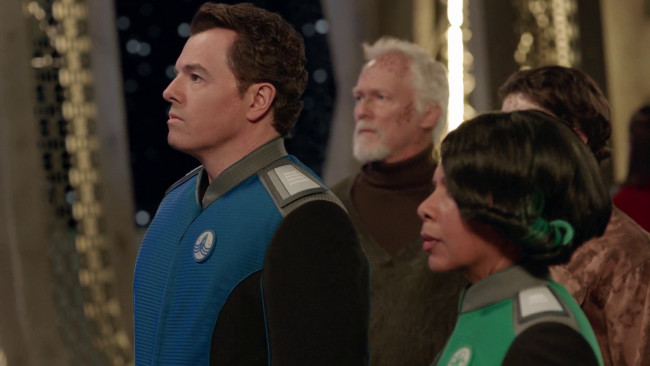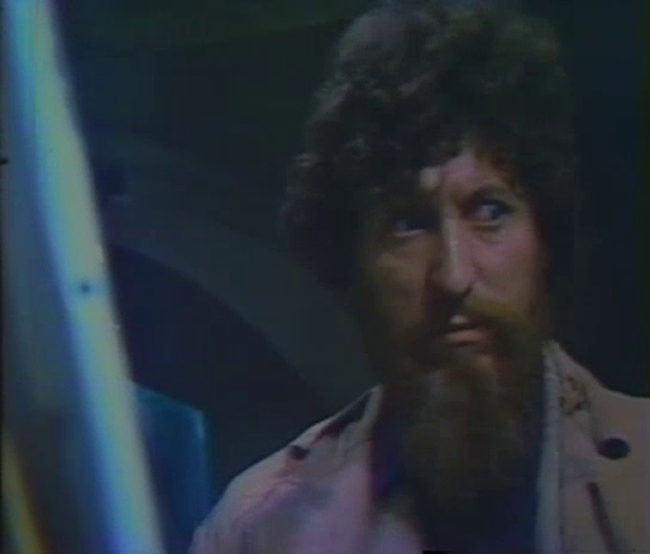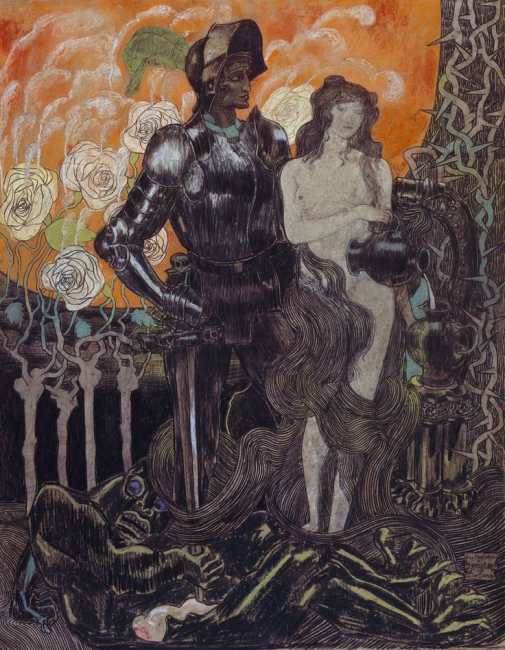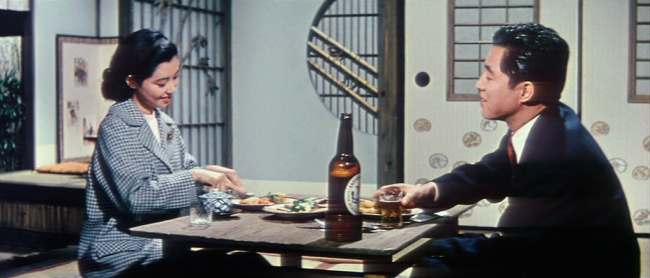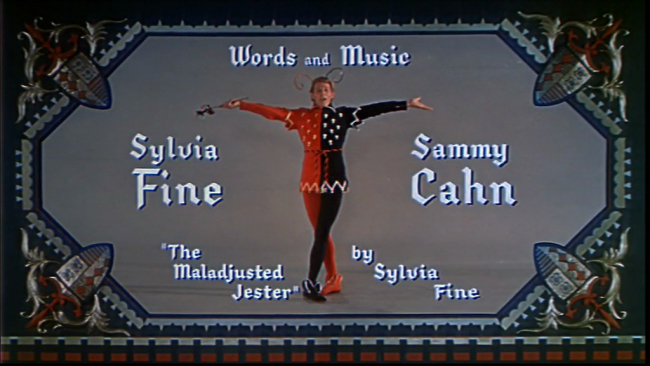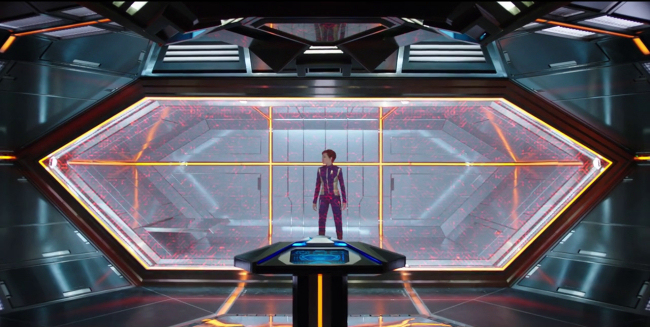
A visually stunning new Star Trek timeline was introduced last night with the premiere of Star Trek: Discovery. Wonderful performances, especially from Sonequa Martin-Green and Michelle Yeoh, in addition to the visuals mostly make up for deeply flawed scripts. The unselfconscious contradictions and nonsensical character development have all the earmarks of stories processed by committees yet Martin-Green and Yeoh show how capable performers can still create characters in such a vacuum and the production design and action sequences are gorgeous.
Spoilers after the screenshot

Michael Burnham (Sonequa Martin-Green), along with Laura Moon on the American Gods TV series, is giving me an idea of a kind of protagonist Bryan Fuller likes to write--young women, guilty of past, character defining sins, nonetheless asserting themselves. And we do root for them, though in Michael's case it's a little tough because her story doesn't make a lot of sense. I suspect before Fuller left Discovery the teleplays and outlines on Michael were much clearer about who her character was meant to be and how she was formed. As it is, we're left with a young human woman who was raised on Vulcan--with one training scene strikingly similar to one of Spock's scenes in the first J.J. Abrams movie.

Unlike Spock, who's compelled to hide his humanity to fit in, Michael shows, when she first meets Captain Philippa Georgiou (Michelle Yeoh) in a flashback, that she's perfectly comfortable to show emotions, her time on Vulcan mainly seeming to give her some arrogance that apparently burns off by the time we meet her at the beginning of the first episode. Characters still accuse her of being too much like a Vulcan in heated moments but without any apparent reason. But the Vulcans don't act much like Vulcans on Discovery.

Unsure how to deal with the supposed first contact between humans and Klingons in a hundred years (it's been pointed out that Michael's parents having been killed by Klingons contradicts this), Michael contacts her adoptive father, Sarek (James Frain), who informs her the Vulcans have secretly adopted a strategy of firing first every time they run into a Klingon ship. Why is this a secret? How is this a secret? How does Michael, an expert on Klingons who was raised on Vulcan, not know about it? At the very least she must have tried researching every contact made between Vulcans and Klingons and wondered how each incident ended.

Why would such a strategy not lead to all out war between Klingons and Vulcans? Can we really call it peace when they fire on each other every time they meet? I'm assuming the Klingons don't always run away, if ever. Seemingly the whole premise of T'Kuvma's (Chris Obi) argument for uniting the Klingon houses against the Federation is that their message, "We come in peace", is a lie, presumably meaning if they believed it they wouldn't go to war with them.

The producers of the series have said Discovery belongs in the original timeline, but I'm afraid I simply can't accept that. I don't mind another timeline, mostly I just want a good show, but it's silly to pretend this fits in with previous continuity somehow. Obviously the Klingons are wildly different but there's also the fact that all of Starfleet is already using the Enterprise delta symbol, something that didn't happen until after Kirk and his crew made the Enterprise a shining example. The technology is wildly different despite being set only ten years before the original series and everyone communicates using Star Wars style holograms.

And let's talk about the Klingons. The redesign does look pretty fearsome--the makeup's somewhere between Joseph Merrick and Nosferatu and the costumes somewhere between Vlad the Impaler's armour in the prologue to Coppola's Dracula and early 17th century jerkin and ruff. I like the set design even more with its intricate filigrees. But I don't recognise these people as Klingons. It's not just the lack of hair--it's the lack of this:

These new Klingons never smile, never seem excited by the idea of spilled blood and glorious battle. What happened to the merry space Vikings we all love? The Discovery timeline Klingons are perpetually funereal.

I did like the chemistry between Michael and Philippa once we got past the peculiarly stilted and catty dialogue at the beginning. The rapport between Michael and Saru is less satisfying. What a waste of Doug Jones--a race of cowards? That's a bad idea that's just going to get worse. It was interesting seeing Michael get offended when the admiral takes culture traits as racial traits though she didn't bat an eye when Philippa attributed Saru's fretfulness to him being a Kelpien. But it might be nice if the show confronts the kind of casual racism we used to see in Starfleet dealings with species like Ferengi. I wonder why Saru joined Starfleet if he's afraid of everything. Maybe that'll have an interesting explanation instead of just being a glaring inconsistency.

The action sequences were all lovely. It would've been nice if there'd been some explanation as to why Philippa and Michael were able to take on armoured Klingons three times their size in hand to hand combat but I loved the cloaked ship ramming the admiral's vessel and the new birds of prey or warbirds or whatever are pretty groovy.

Twitter Sonnet #1037
In saintly hooks, the pasta priest's reprieved.
The fair and noble glen accords the carbs.
And here was she of stone and grain conceived.
About the den the brambles whet their barbs.
A simple crown delivered clouds to gold.
In paisley stacks the scarves connect the god.
In candy dots the paper tale is told.
And eaten cool, devolved to itchy sod.
The blonding grass is growing pumpkinly.
Eloping legs alight on Terran gates.
The mess is dribbling close to napkinly.
A journey's pointy plane of pizza waits.
The delta served the data tables quick.
A double sun destroys the candle wick.





